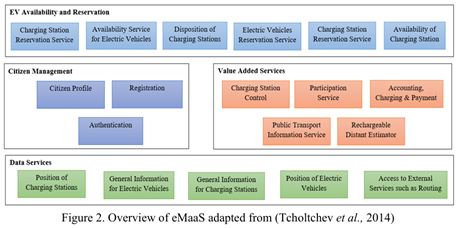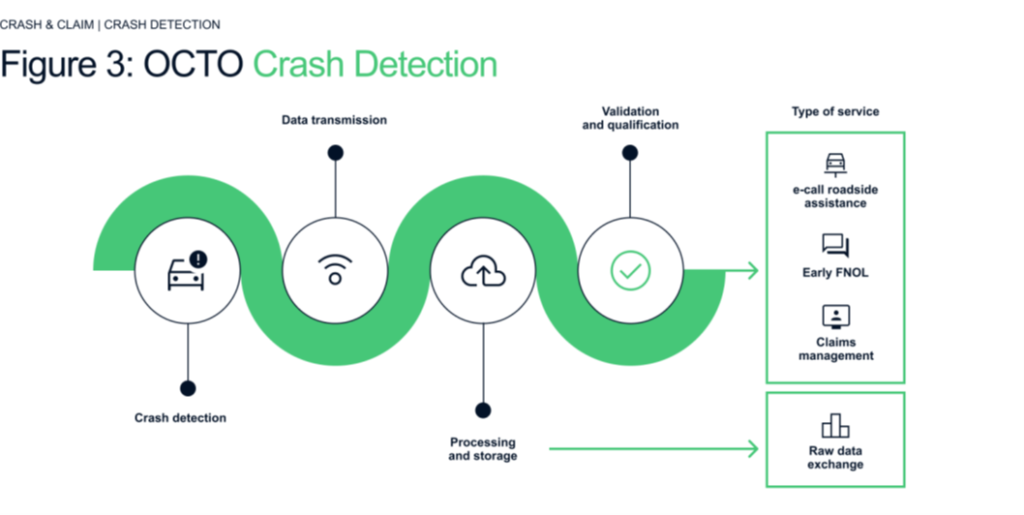Researchers Bokolo Anthony Jnr, Sobah Abbas Petersen and John Krogstie from the Department of Computer Science, Norwegian University of Science and Technology, NTNU, Norway and Dirk Ahlers Department of Architecture and Planning, Norwegian University of Science and Technology, NTNU, Norway, published an article in Emerald Insight regarding a big data multi-tier architecture for electric mobility.
The article provides an up- to-date review on this issue. Here are some of the key issues.
Mobility research in smart cities is gaining prominence globally because of the increase in urban population and transport infrastructure in cities. This has resulted in an increase in the number of cars in urban environments that leads to pollution, which poses a serious threat to citizens’ health. To address these issues there is a need to implement a collaborative vehicle sharing solution termed as eMaaS that deploy green transportation such as EVs (electric cars, Segway, electric bicycles, etc.). The transition toward electric mobility is believed to enhance energy security, and contribute to pollution of air quality, whereas EVs are characterized as being lowly polluting, energy-efficient and noiseless
In smart cities, eMaaS has the potential to reduce dependence on private vehicles and provide seamless mobility as it allows the collaboration and integration across transport operators, by providing seamless transport services to citizens via a single application
EMaaS uses different types of data, which includes public data (routes, quality of roads, schedules, etc.), business data (ticket information, charging stations, fees, etc.) and private data (profiles, targets preferences, etc.) for EV reservation and availability, management of citizens data and other related mobility data in creating value-added services. Correspondingly, MaaS collects data from citizens and provides information in real-time to improve mobility service performance.

The authors point out that presently processing and visualizing of mobility-related data is not effective because of data being generated from different infrastructures dealing with the heterogeneity of devices and communication protocols, as well as different mobility service interoperability.
Such a challenge involves integration of innovative ICT solutions to process data from EVs that can be used by applications to improve e-mobility services such as application programming interface (API) capable of facilitating interoperability and providing access to processed and stored data required to provide appropriate information on mobility services in cities . Thus, API serves as data adapters integrated for establishing connections to different mobility platforms, external databases and real-time streaming data.
The layer architecture of digital technology.
The researchers indicate that there is a need to propose an architecture that considers both history, online data and real-time data, as well as the interoperability of big data.
The architecture integrates APIs to enable interoperability between different infrastructures required for eMaaS and aids multiple partners to exchange and share data for making decision regarding e-mobility services
According to the study, the proposed multi-tier architecture comprises context, service, business, application, data space, technology and physical infrastructure layers. Thus, each of the layers are discussed below.
Context layer
The context layer is concerned with the main feature or capability to be provided, which in the context of the study is eMaaS to citizens. The context layer captures the needs and requirements of all stakeholders involved in eMaaS. It also involves the main target to be attained, which is the increase of eMaaS operations to reduce pollution and ease of transportation of citizens. Hence, this layer depends on all other layers in the architecture to be actionable.
The study emphasizes that the main goal of the context layer is to improve sustainable transportation in smart cities to aid reduce carbon dioxide emissions.
Service layer
The services layer refers to operations required to accomplish eMaaS business processes. This layer involves all individual services that work together in ensuring that the mobility services are provided to citizens and stakeholders. The service layer is an important layer in the architecture because it provides a communication module between municipalities, transport companies and other partners that offers e-mobility related services. In addition, service layer aids trusted third party mobility data providers such as routing location, weather service providers and so on to add new services or update existing services to create a mobility value-chain of services to citizens and stakeholders
Business layer
This layer entails enterprises that collaborate virtually to create eMaaS to citizens in smart cities. Thus, the business layer involves businesses’ strategies used by each enterprise to meet their goals as relates to sustainable transportation. This layer comprises enterprises involved in the e mobility services, which include energy provider, EV provider, EV rental, city transport, payment
Application and data processing layer
The application and data processing involve the software programs and APIs used to provide eMaaS solutions to citizens. Thus, this layer integrates APIs to process, provide and manage mobility related data from various sources to ensure that transport services are provided to citizens
Data space layer
This layer is the center of the architecture as it comprises types and sources of data required to facilitate eMaaS operations in smart cities. The data space layer describes how the mobility-related data repositories are organized and accessed, and specifies where meta-data, such as transport routing description Big data driven multi tier architecture information are stored and how they can be accessed.
EMaaS uses public data such as schedules, routes, weather and so on, and business data, which includes ticket fees information, charging stations, etc., and private data citizens profiles, preferences, targets, etc.
Technologies layer
This layer describes the software and hardware infrastructure that supports the deployment of eMaaS operations in smart cities. The technology layer comprises the essential computing, telecommunications networks and physical hardware. This layer provides technical elements that align the physical infrastructure and defines how the infrastructure related to the services, application and data processing, and how data layers are linked
Physical infrastructures layer
This layer includes the generation of real-time mobility data from EVs, charging stations, buses, taxi, bikes and other physical devices related to transportation services in smart cities. This layer produces massive real-time data collected in aggregate from physical sources that are transferred to the technology layer for big data processing, analysis and storage.

Case study procedure
The study used a single-case study approach to get in-depth information about eMaaS in practice as it provides rich evidence and a clear description of theoretical models. Data was collected in a technology infrastructure company in Norway through four in-depth, semi-structured interviews questions related to the proposed multi-tier architecture
Findings suggest that the multi-tier architecture is applicable in managing eMaaS that are entirely based on real-time data in creating an ecosystem of open mobility data that uses APIs to provide interoperable access to mobility metadata (that catalog and describes the data) and data sources (that point to internal open and external data resources).
Findings suggest that the architecture offers an approach for collecting, aggregating, processing and provisioning of data originating from sources to improve electric mobility in smart cities. More importantly, findings from this study provide guidance for municipalities and policymakers in improving electric mobility services.
The researchers conclude that the most concrete benefits that could be obtained is a better transportation management (changing transportation schedule, changing traffic zone, strategies for anomaly detection, regulating parking fee for citizens, etc).

Conclusion
This study proposes a multi-tier architecture that stores, processes, analyzes and provides data and related services to improve e-mobility within smart cities. The multi tier architecture aims to support and increase eMaaS operation of EVs toward improving transportation services for city transport operators and citizens moving within the city to provide solutions for sustainable transport and e-mobility services.
Decision science methodology using case study by interview was used to verify the proposed multi-tier architecture. Data collected from the case study confirmed the applicability of the multi-tier architecture. Although qualitative data was collected to verify each layer of the architecture, the authors point out that there is need to use quantitative data either from survey or experiment to statistically test the applicability of the architecture. Similarly, data was collected from a single company in Norway, hence, there is a need to test the architecture with real case data collected from other transport service companies.

